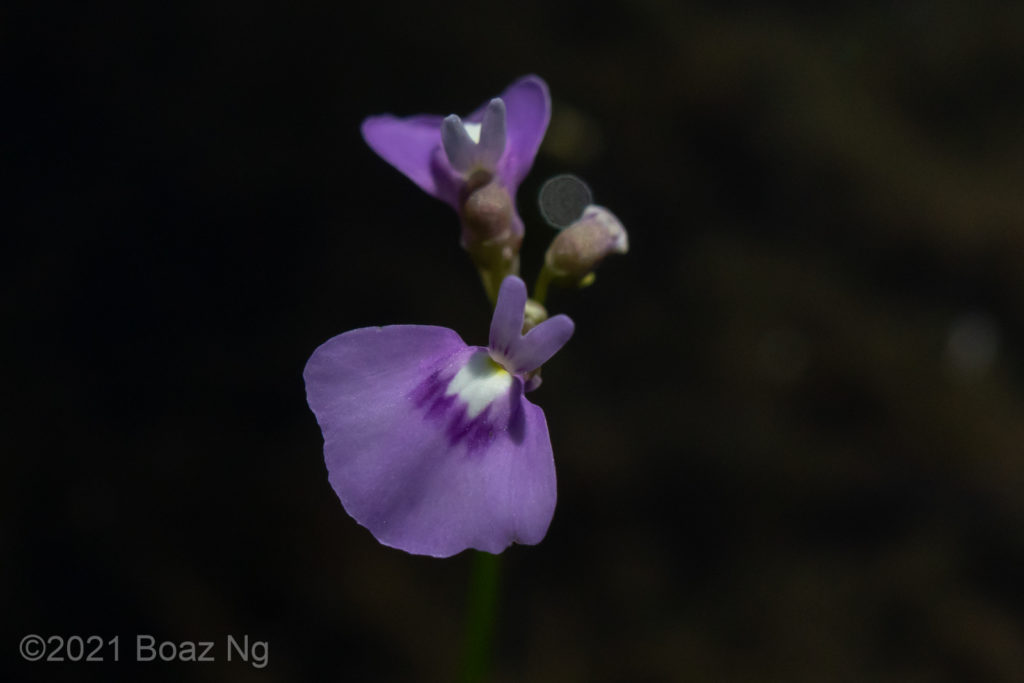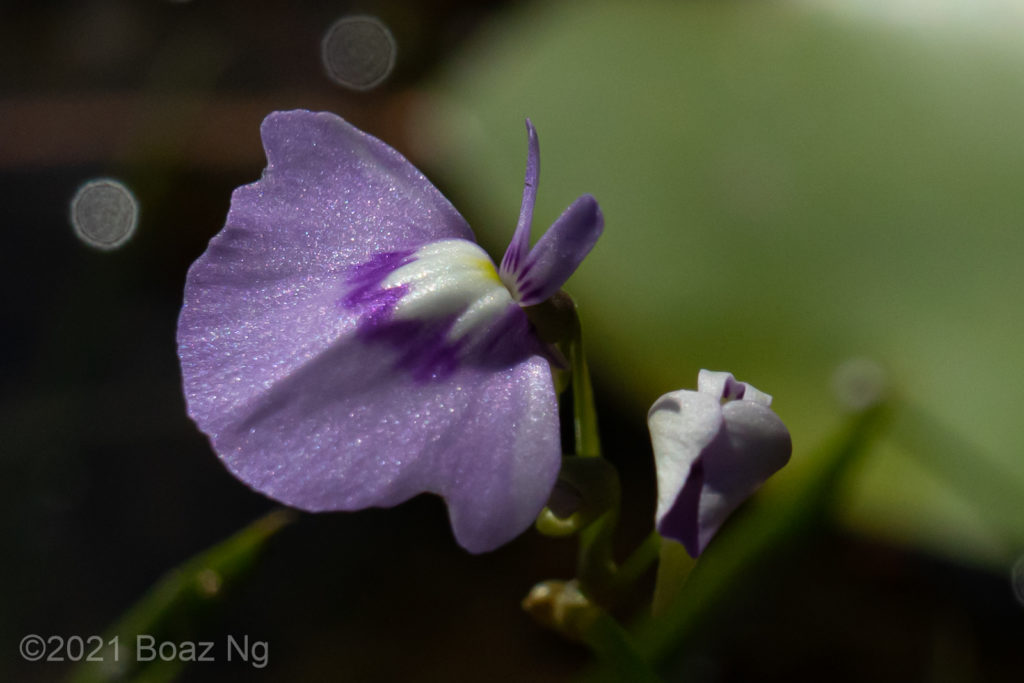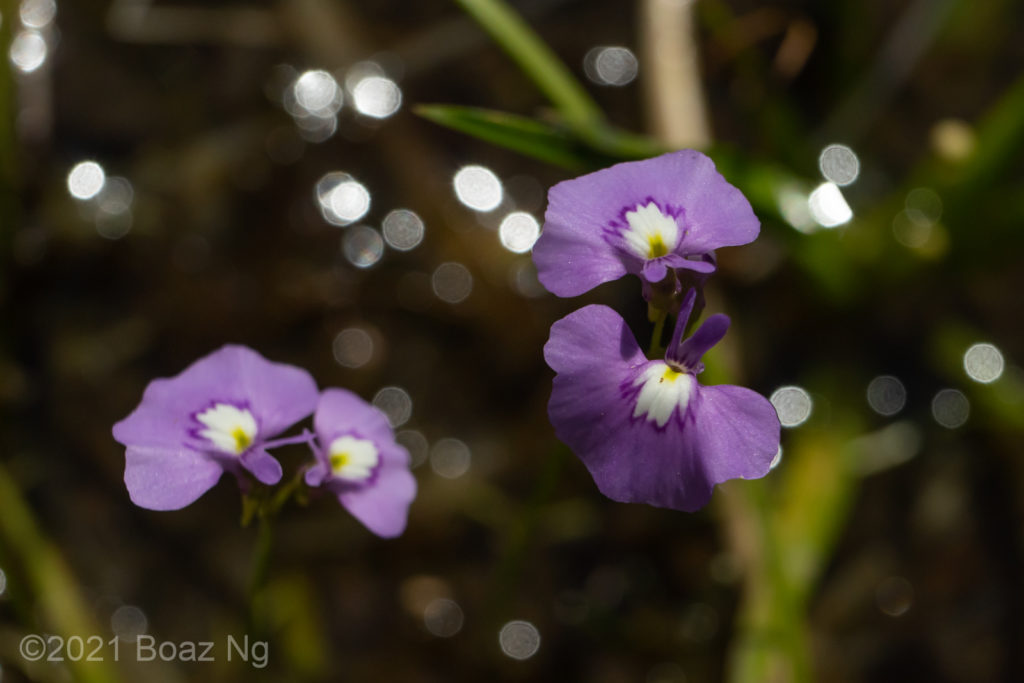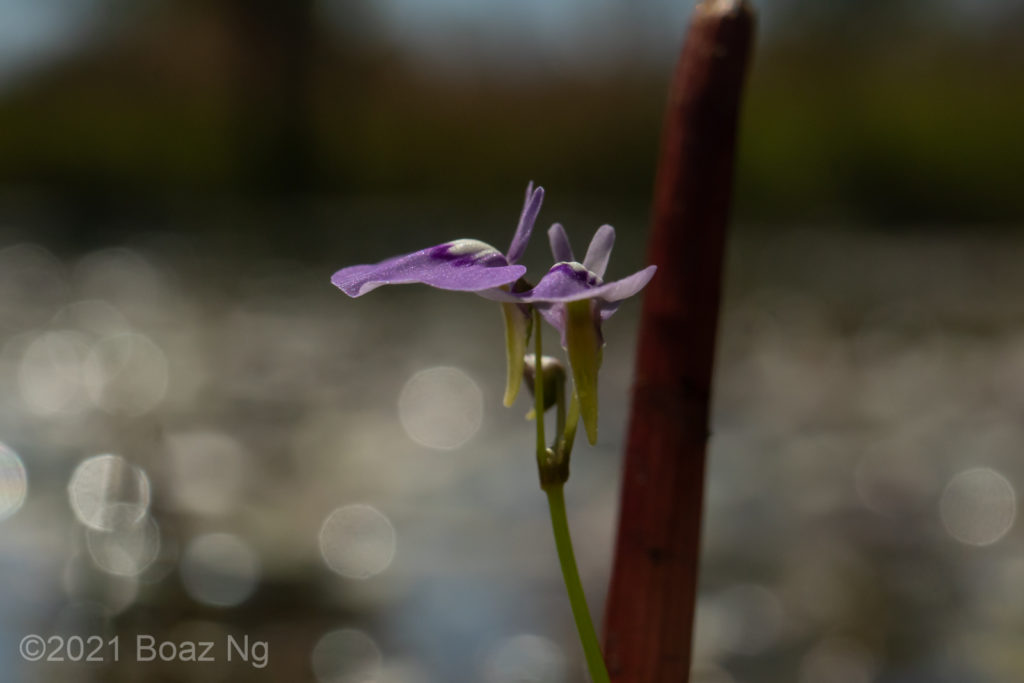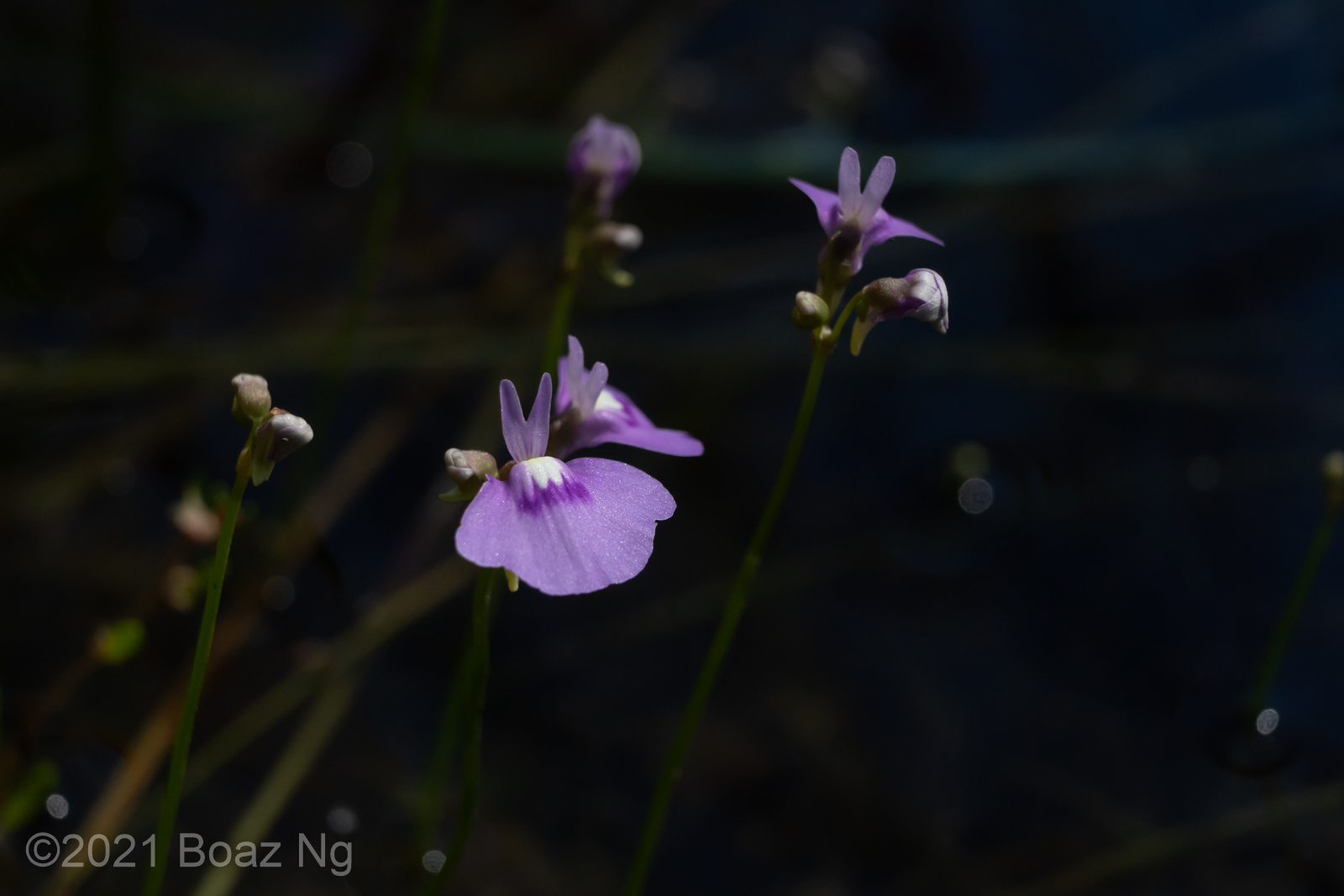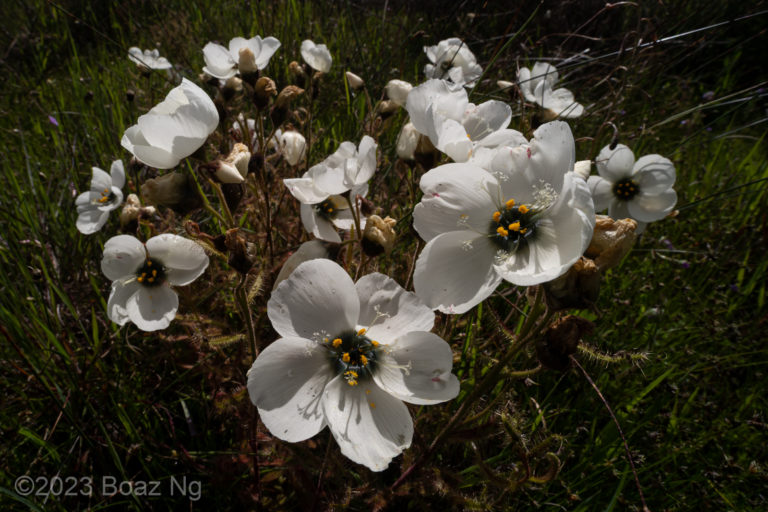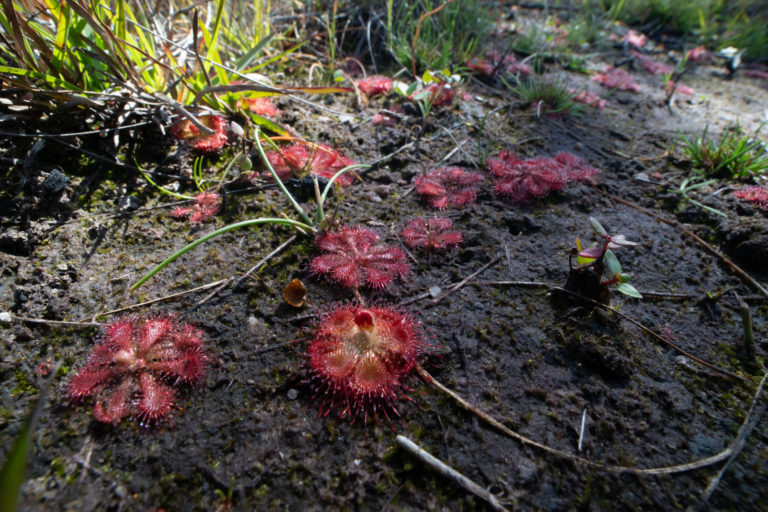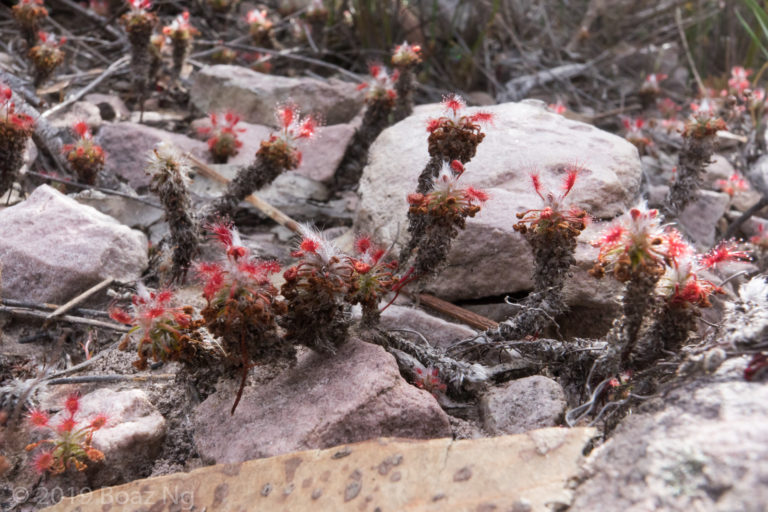Utricularia triflora is a species of affixed aquatic bladderworth endemic to the Top End of Australia. The species is named for its three-bloomed inflorescence.
The flower of U. triflora is purple in colouration. The lower corolla lip is flaring with a margin that has broad, irregular lobes. The palate region is slightly raised and coloured yellow at the opening, transitioning to white further out and fringed with jagged dark purple markings. The upper corolla lip is deeply bifurcated into two ‘bunny ear’ lobes. Flowers are typically produced in sets of three, although not all blooms may be open at the same time.
The species has been reported to be difficult to observe, coming into bloom comparatively later into the dry season. I observed it in the Howard River Sandplains where it grew in an side-arm of a large seasonal swamp. This swamp, due to its size, was more persistently wet than most of the small seepages and sandplain wetlands that the other bladderworts prefer. The plants were blooming in shallow receeding water and were a week or so away from being exposed to air. I also saw them in a track that traversed another swamp where they were blooming in rapidly drying mud.
U. triflora is most similar to U. hamiltonii, which shares a somewhat similar floral morphology and patterning. U. triflora is distinguished by its more widely flaring lower corolla lip (that of U. hamiltonii is distinctly squarish in shape), more rounded upper corolla lip lobes (those of U. hamiltonii are sharp, like dingo ears) and tall, multi-flowered inflorescence (that of U. hamiltonii are usually single-flowered and short).
